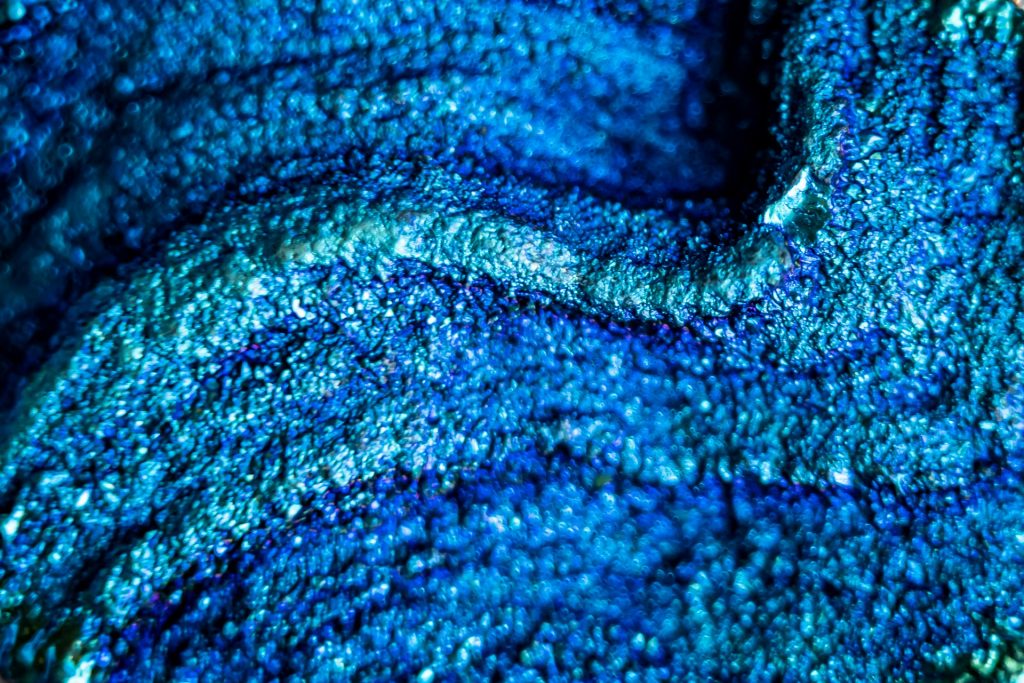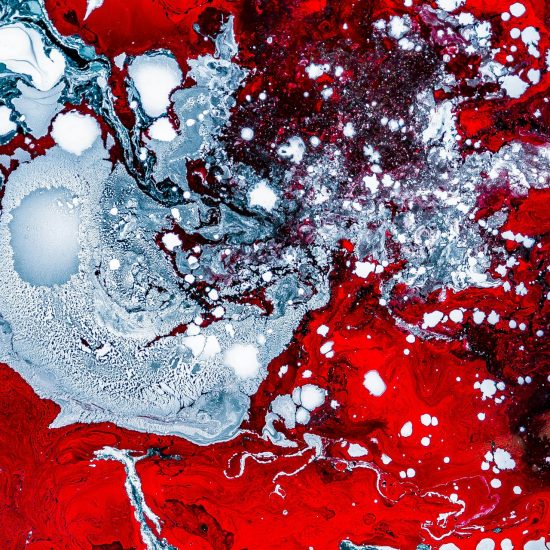Colors in art are not merely aesthetic choices; they carry profound meaning and are often used to convey emotions, symbols, and narratives. In the realm of famous paintings, the choice and application of color can deeply enhance the understanding of a piece. Let’s explore how some of the most celebrated artists have used color to imbue their works with significance.
1. The meaning of colors: Blue in Picasso’s “The Old Guitarist”

Source: https://unsplash.com/photos/a-close-up-of-some-rocks-ev2mte1drGc
Pablo Picasso’s “The Old Guitarist” is a seminal piece from his Blue Period, where the pervasive use of blue tones is a hallmark.
Emotional Depth
The dominant blue palette in “The Old Guitarist” evokes a sense of melancholy and desolation. Created during a time of personal hardship for Picasso, the blue hues reflect his feelings of sadness and poverty. This color choice helps to communicate the isolation and despair of the subject, an old, blind guitarist.
Symbolic Implications
Blue in this painting is more than just an expression of sorrow. It also symbolizes introspection and spiritual depth. The guitarist, bent over his instrument, appears lost in his music, suggesting that even in hardship, art provides a means of escape and solace.
Historical Context
During the early 20th century, blue was often associated with modernity and emotional depth in art. Picasso’s use of blue can be seen as part of a broader trend in which artists explored new ways to convey human experience. His Blue Period marked a departure from traditional uses of color, paving the way for more expressive and psychological uses in modern art.
2. The meaning of colors: The Radiance of Gold in Klimt’s “The Kiss”
Gustav Klimt’s “The Kiss” is renowned for its luxurious use of gold leaf, which gives the painting a radiant and almost ethereal quality.
Luxury and Divine Love
Gold has long been associated with wealth, divinity, and eternal love. In “The Kiss,” Klimt uses gold to elevate the depiction of a loving embrace to something timeless and universal. The gold background and the intricate patterns suggest a paradise, making the kiss seem sacred and otherworldly.
Art Nouveau Influence
Klimt was a key figure in the Art Nouveau movement, which celebrated decorative art and intricate designs. The use of gold in “The Kiss” is a direct reflection of this influence, combining modernist sensibilities with historical techniques reminiscent of Byzantine mosaics.
Psychological Warmth
Beyond its symbolic and historical connotations, gold also adds warmth to the painting. This warmth envelops the couple, making their connection seem intimate and safe. The glowing quality of the gold suggests an inner light, highlighting the joy and affection they share.
3. The Bold Reds in Van Gogh’s “The Bedroom”
Vincent van Gogh’s “The Bedroom” utilizes bold, primary colors to create a vibrant and personal space. The use of red, in particular, plays a significant role in this piece.
Intensity and Passion
Red is a color often associated with passion, energy, and life. In “The Bedroom,” the red accents—found in the bedspread and pillows—contrast sharply with the cooler blues and greens. This contrast draws the viewer’s eye and adds a sense of liveliness and intensity to the otherwise simple room.
Emotional Resonance
Van Gogh was known for his emotional and expressive use of color. The red in “The Bedroom” may also reflect his desire for comfort and stability. The warmth of the reds can be seen as an attempt to create a welcoming and nurturing environment, which Van Gogh often sought during his turbulent life.
Symbolism of Home
Red can also symbolize the heart and hearth of a home. In this painting, the touches of red may represent Van Gogh’s longing for a place where he felt secure and at peace. This personal symbolism adds a layer of depth to the painting, making it more than just a depiction of a physical space but a reflection of his inner world.
4. The meaning of colors: Green in Monet’s “Water Lilies”

Source: https://unsplash.com/photos/a-close-up-view-of-a-green-carpet-jx4U8BI9qjI
Claude Monet’s series of “Water Lilies” paintings are famous for their serene and almost hypnotic use of greens.
Nature and Tranquility
Green is universally associated with nature, growth, and tranquility. Monet’s extensive use of green in his “Water Lilies” series captures the peacefulness of the natural world. The lush greenery surrounding the water lilies creates a harmonious and calming scene, inviting the viewer to relax and meditate on the beauty of nature.
Impressionist Technique
Monet’s use of green also reflects his Impressionist technique. He often painted en plein air, capturing the changing light and colors of the natural environment. The varied shades of green in the “Water Lilies” convey the dappled light and the ever-changing reflections on the water’s surface.
Symbolic Reflection
Beyond its naturalistic qualities, green in Monet’s work can be seen as a symbol of reflection and introspection. The water lilies, floating gently on the surface, mirror the sky and surrounding landscape, suggesting a deeper connection between the earthly and the ethereal. This reflective quality invites viewers to contemplate their own place within the natural world.
5. The Stark Whites in Malevich’s “White on White”
Kazimir Malevich’s “White on White” is a radical departure from traditional uses of color in art, emphasizing the purity and transcendence of white.
Purity and Minimalism
White is often associated with purity, simplicity, and minimalism. In “White on White,” Malevich strips away all extraneous detail, leaving only the bare essentials. This use of white challenges the viewer to focus on the form and the concept behind the painting, rather than getting lost in color or detail.
Suprematist Philosophy
As a leading figure in the Suprematist movement, Malevich believed in the supremacy of pure artistic feeling over the depiction of objects. The white color in this painting embodies this philosophy, representing a break from the material world and a move towards pure abstraction and spiritualism.
Infinite Possibilities
White can also signify infinite possibilities and the idea of a blank slate. In “White on White,” the subtle variations in the shades of white suggest that even within apparent simplicity, there are layers of meaning and potential. This invites the viewer to project their own interpretations and emotions onto the painting, making it a deeply personal and subjective experience.
Conclusion
The use of colors in famous paintings is a powerful tool for conveying emotion, symbolism, and meaning. From the melancholic blues of Picasso’s “The Old Guitarist” to the transcendent whites of Malevich’s “White on White,” each color choice adds depth and meaning to the artwork. Understanding these color choices enhances our appreciation of these masterpieces and offers insight into the artists’ intentions and the cultural contexts in which they were created. By delving into the significance of colors in these famous paintings, we gain a richer, more nuanced understanding of art and its ability to communicate complex human experiences.




